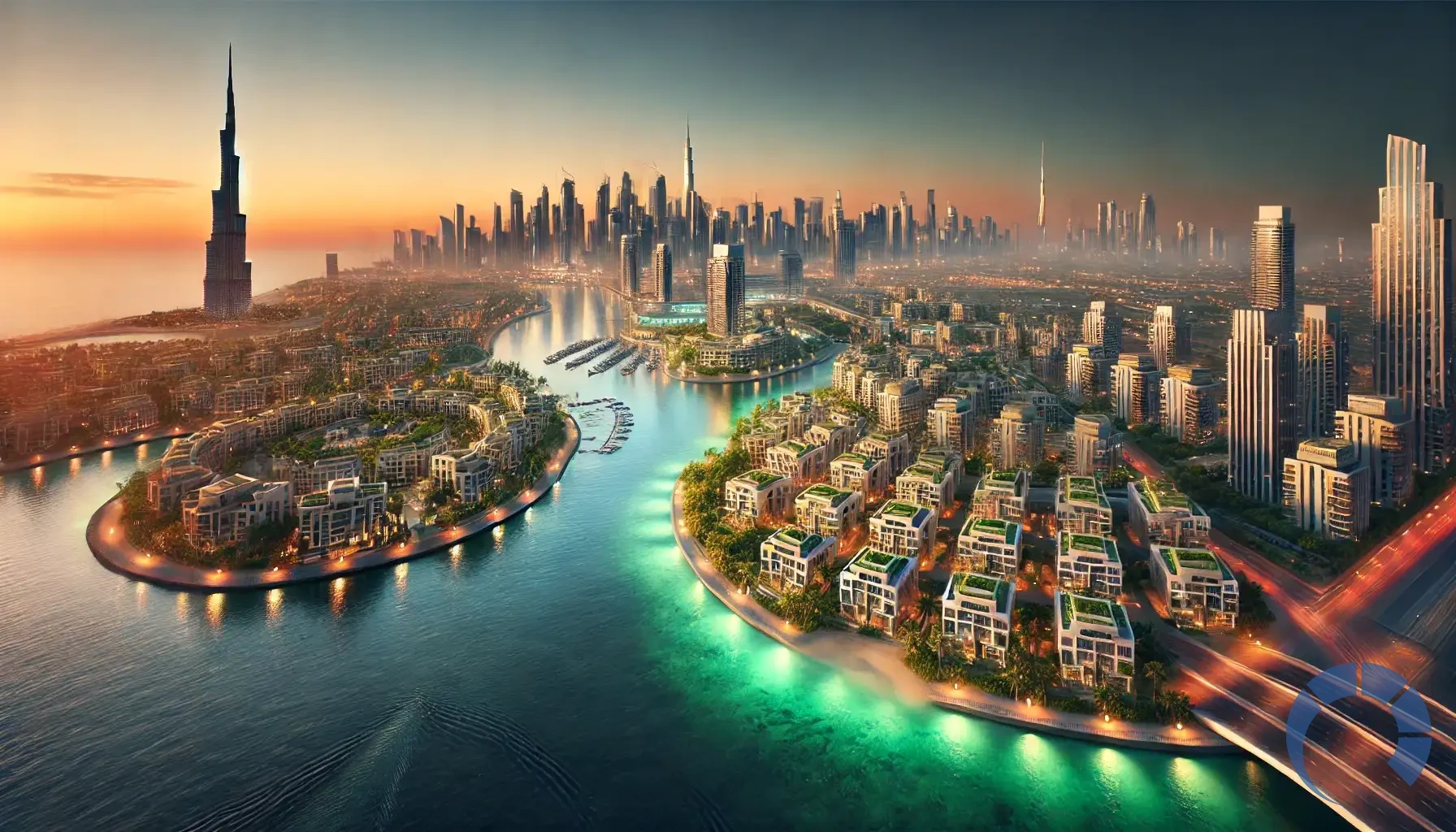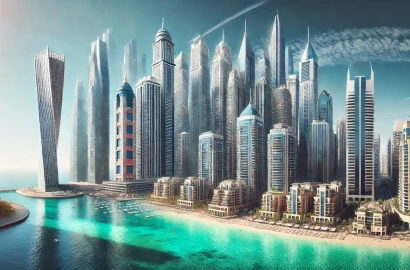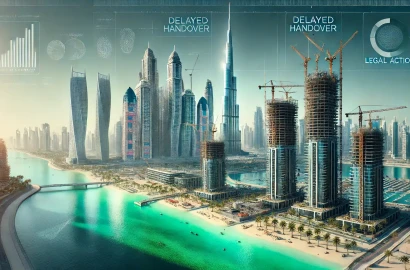
How Do Property Prices in Dubai's Emerging Neighborhoods Compare to Prime Areas?
Dubai’s real estate market is famed for its iconic skyline, record-breaking luxury developments, and premium property values in areas like Palm Jumeirah, Downtown Dubai, and Dubai Marina. However, beneath the glitz of ultra‑prime locations lies an expanding segment that offers considerable value: emerging neighborhoods. These locales—such as Jumeirah Village Circle (JVC), Dubai Sports City, and Dubai South—are rapidly gaining popularity for their affordability, robust growth potential, and attractive rental yields.
This comprehensive guide explores how property prices in Dubai’s emerging neighborhoods compare to those in prime areas. We delve into detailed comparisons of price ranges, discuss market trends, and highlight the investment potential of these regions. Whether you are a first‑time buyer or an experienced investor, understanding the differences can help you make an informed decision and build a diversified property portfolio in one of the world’s most dynamic cities.
The Two Sides of the Market: Prime Areas vs. Emerging Neighborhoods
Prime Areas: The Pinnacle of Luxury
Dubai’s prime areas are synonymous with luxury and exclusivity. In neighborhoods such as Palm Jumeirah, Downtown Dubai, and Dubai Marina, property prices are among the highest in the city. The allure of these areas lies in their:
- World-class amenities: Boasting waterfront views, upscale shopping, fine dining, and proximity to cultural landmarks.
- Prestige and status: Owning property in these locations is often seen as a symbol of success and affluence.
- Robust infrastructure: These areas feature state-of-the-art facilities, advanced transportation links, and a fully developed urban environment.
According to recent market data, average prices in prime areas range from AED 2,000 to AED 4,000 per square foot. Ultra‑luxury properties in neighborhoods like Palm Jumeirah, Emirates Hills, and Jumeirah Bay Island can command prices as high as AED 8,800 per square foot for homes valued at around US$10 million or more. This premium pricing reflects the exclusivity, architectural excellence, and high-end lifestyle that define these neighborhoods.
For further reading on premium areas and their benefits, explore our guide on The Most Popular Areas for Freehold Properties in Dubai: A Guide for Investors and The Main Benefits of Owning a Freehold Property in Dubai: Why It's a Smart Investment.
Emerging Neighborhoods: The Affordable Frontier
In contrast, emerging neighborhoods in Dubai offer significantly more affordable options, attracting a diverse group of buyers—including young professionals, first‑time investors, and families looking for more space without the extravagant costs of prime areas.
In these regions, prices typically range from AED 500 to AED 1,500 per square foot. Let’s take a closer look at a few popular emerging neighborhoods:
- Jumeirah Village Circle (JVC):
JVC is one of the city’s best‑known affordable areas. Property prices here are very competitive, with costs ranging from AED 3,000 to AED 6,000 per square meter (roughly AED 279 to AED 557 per square foot). The area’s family‑friendly environment, integrated community amenities, and modern infrastructure make it a magnet for first‑time buyers and investors alike. - Dubai Sports City:
Known for its sports facilities and recreational amenities, Dubai Sports City offers properties that can be purchased for as little as AED 450,000. This affordability, combined with the promise of a vibrant lifestyle, has made the area increasingly popular among young professionals and investors. - Dubai South:
Positioned strategically near Al Maktoum International Airport and Expo City Dubai, Dubai South is emerging as an attractive option for both residential and commercial investments. Prices here are generally lower than those in central areas, making it a promising location for long‑term growth and attractive rental yields.
For more on the advantages of emerging neighborhoods and to compare off‑plan versus ready‑to‑move‑in options, see our article on Ready-to-Move-In vs. Off-Plan Properties in Dubai: Key Factors to Consider.
Price Comparison: A Detailed Look
Price Per Square Foot
Prime Areas:
- In luxury locations such as Palm Jumeirah, Downtown Dubai, and Dubai Marina, the average price can range from AED 2,000 to AED 4,000 per square foot. Ultra‑high‑end properties in these areas may even exceed AED 8,800 per square foot, reflecting their top‑tier status and exceptional amenities.
Emerging Neighborhoods:
- In emerging areas like JVC, Dubai Sports City, and Dubai South, the price per square foot is substantially lower—typically between AED 500 and AED 1,500 per square foot. This difference can represent as little as 25% to 50% of the cost per square foot in prime locations.
For an in‑depth analysis of property costs, check out How Much Money Is Required to Buy Property in Dubai?
Rental Yields and Investment Returns
One of the most compelling reasons to invest in emerging neighborhoods is their attractive rental yields. Recent market trends reveal:
- Emerging areas such as Town Square have reported rental yields of up to 9%, coupled with double-digit property price growth over recent months.
- In contrast, while prime areas command higher prices, the rental yields are often lower due to the premium valuations.
Higher rental yields make emerging neighborhoods a strong proposition for investors seeking income-generating assets. For additional insights on maximizing ROI, visit Dubai Real Estate Investment Trends 2025: Strategies for Maximizing ROI.
Market Trends Over Time
Over the past few years, Dubai’s property market has experienced steady growth even in its emerging segments:
- Emerging Neighborhood Growth: Despite starting from a lower base, the affordability of these areas is driving strong demand. Many of these neighborhoods are positioned near new infrastructure projects and urban renewal schemes, which are expected to fuel further price appreciation.
- Prime Area Resilience: While prime areas continue to attract luxury buyers and high-net‑worth individuals, the gap between emerging and prime neighborhoods is narrowing slightly as more modern amenities and infrastructure upgrades are introduced in emerging areas.
For a broader perspective on market dynamics, read The Dubai Renaissance: How Innovation, Sustainability, and Cultural Fusion Are Revolutionizing Real Estate Investment.
The Investment Potential: Weighing Your Options
Why Choose Prime Areas?
Investing in prime areas has long been favored by those seeking prestige, luxury, and long‑term capital stability. Here are some key advantages:
- High Prestige and Branding: Properties in Palm Jumeirah, Downtown Dubai, and Dubai Marina not only offer luxurious amenities but also serve as a status symbol.
- Strong Infrastructure: These areas are well‑developed with extensive amenities, high‑quality services, and excellent connectivity.
- Resilient Capital Appreciation: Even though the initial cost is high, these properties often maintain their value due to consistent demand.
However, the high entry cost may limit the number of investors able to participate fully in these markets.
Why Consider Emerging Neighborhoods?
Emerging neighborhoods provide a distinct set of advantages that make them attractive for a wider range of buyers and investors:
- Affordability: With prices significantly lower than in prime areas, emerging neighborhoods offer an accessible entry point into Dubai’s real estate market. For instance, while prime properties may cost AED 2,000–4,000 per square foot, emerging areas may only require AED 500–1,500 per square foot.
- High Rental Yields: Lower purchase prices combined with robust demand result in higher rental yields—often 8%–9% or more—making these properties an excellent source of regular income.
- Growth Potential: As infrastructure projects (such as those outlined in the Dubai 2040 Urban Master Plan) continue to reshape the city, emerging neighborhoods are poised for substantial capital appreciation.
- Diverse Investment Options: These areas include a mix of property types—from studios and one‑bedroom apartments to luxury townhouses—allowing investors to tailor their portfolios based on risk tolerance and desired returns.
For a closer look at the financing and cost benefits, refer to Understanding Down Payment Requirements for Buying a Home in Dubai.
Comparative Analysis: A Real-World Example
Consider the following scenario:
- Prime Area Investment: A luxury apartment in Downtown Dubai may sell for around AED 3,000 per square foot. For a 1,000‑square‑foot apartment, the purchase price could reach AED 3 million or more.
- Emerging Neighborhood Investment: The same size apartment in an emerging neighborhood like JVC might be priced at approximately AED 800 per square foot—resulting in a cost of roughly AED 800,000 to AED 1.5 million. This lower entry cost not only reduces the initial capital outlay but also offers a higher percentage return if the area appreciates over time.
Moreover, properties in emerging areas may achieve higher rental yields. For example, if an apartment in an emerging neighborhood yields 9% annually compared to 6% in a prime area, the difference in income generation can significantly boost overall investment returns.
Market Trends and Future Outlook
Recent Growth Indicators
Data from the past year indicates that even as prime areas continue to experience high demand, emerging neighborhoods are witnessing steady growth:
- Price Growth: Emerging areas are not static—many are experiencing double-digit growth rates in property prices. In Town Square, for example, rental yields have reached as high as 9%, and property prices have experienced double-digit growth in recent months.
- Demand Drivers: Affordability, combined with modern amenities and improved infrastructure, is driving demand. This trend is particularly strong among young professionals and families who are priced out of prime locations.
For an up‑to‑date overview of these trends, visit Dubai Real Estate: Unveiling a World of Luxury, Innovation, and Investment Opportunities.
Future Prospects
Looking ahead, market experts predict that:
- Emerging Neighborhoods Will Appreciate Further: Continued urban development and infrastructure projects will likely boost property values in emerging neighborhoods.
- Prime Areas Remain Stable but Expensive: While properties in prime areas will continue to attract luxury buyers, their high entry costs may limit growth potential relative to emerging markets.
- Rental Yields Will Improve: As more buyers turn to emerging neighborhoods, the increased demand for rental properties will push yields even higher.
- Diversification Benefits: Investors who diversify their portfolios by including both prime and emerging properties can benefit from balanced risk and potentially higher overall returns.
For more detailed projections and expert strategies, see Dubai Real Estate Investment Trends 2025: Strategies for Maximizing ROI.
Investment Strategies: How to Choose the Right Segment
For New Investors
Emerging neighborhoods present an excellent entry point into Dubai’s property market. Here are some strategies for new investors:
- Start Small:
Consider a modest apartment or studio in a neighborhood like JVC or Dubai Sports City. Lower entry costs mean you can build your portfolio without overextending financially. - Focus on Growth Areas:
Research which emerging areas are poised for future development. Areas with planned infrastructure projects or upcoming community amenities are more likely to see rapid appreciation. - Leverage Flexible Financing:
Emerging areas often come with attractive financing options, such as lower down payment requirements. Learn more about financing possibilities in How Much Money Is Required to Buy Property in Dubai? - Consider Rental Income:
With rental yields in emerging areas reaching up to 9%, investing in a property that offers both potential for capital appreciation and rental income can be a smart move. - Monitor Market Trends:
Stay updated with market news and reports to identify when a neighborhood is poised for rapid growth.
For Seasoned Investors
For those with established portfolios, adding properties in emerging neighborhoods can offer diversification and improved yields:
- Balance Your Portfolio:
Combining high‑value assets in prime areas with more affordable investments in emerging neighborhoods can provide stability and growth potential. - Capitalize on Off-Plan Investments:
In many emerging neighborhoods, off‑plan properties are available at competitive prices and have significant appreciation potential once completed. - Maximize Rental Yields:
With the potential for higher rental yields in emerging neighborhoods, investors can enhance their cash flow while waiting for capital gains. - Use Data-Driven Insights:
Leverage analytical tools and market reports (such as those available in Dubai Real Estate Investment Trends 2025: Strategies for Maximizing ROI) to pinpoint the best opportunities.
A Comprehensive Comparison: Summary of Key Differences
Price Per Square Foot
- Prime Areas:
• AED 2,000–4,000+ per square foot
• Ultra‑luxury properties may reach AED 8,800 per square foot - Emerging Neighborhoods:
• AED 500–1,500 per square foot
• Example: JVC ranges approximately from AED 279 to AED 557 per square foot (based on AED 3,000–6,000 per square meter)
Investment Returns
- Prime Areas:
• Often yield lower rental yields relative to high prices
• Higher absolute capital appreciation but require a larger initial outlay - Emerging Neighborhoods:
• Attractive rental yields (up to 9%)
• Lower entry costs allow for higher percentage returns and diversification
• Ideal for first‑time investors and those seeking a balanced portfolio
Lifestyle and Community Amenities
- Prime Areas:
• Offer unparalleled luxury, high-end amenities, and status
• Dense urban centers with premium infrastructure and extensive services - Emerging Neighborhoods:
• Provide a more relaxed, family‑friendly environment
• Offer modern amenities with a focus on community living and affordability
• Often include planned developments with parks, schools, and retail centers
For further details on the benefits of these differences, refer to The Benefits of Immediate Occupancy with Ready-to-Move-In Properties in Dubai.
Conclusion
Dubai’s real estate market is a study in contrasts. On one end, prime areas such as Palm Jumeirah, Downtown Dubai, and Dubai Marina continue to uphold their reputation as the epitome of luxury—commanding prices ranging from AED 2,000 to AED 4,000 per square foot (and even more for ultra‑high‑end properties). These areas offer unparalleled amenities, prestigious addresses, and long‑term capital stability, but they come with a steep price tag that may be out of reach for many investors.
On the other hand, emerging neighborhoods like Jumeirah Village Circle, Dubai Sports City, and Dubai South offer significantly more affordable options. With prices typically ranging from AED 500 to AED 1,500 per square foot, these areas allow a wider spectrum of buyers and investors to enter the market. Their affordability, combined with attractive rental yields—sometimes as high as 9%—and the potential for robust capital appreciation as infrastructure and urban development projects progress, makes them a compelling choice for both new and experienced investors.
In essence, while prime areas deliver luxury and exclusivity, emerging neighborhoods present an opportunity to benefit from lower entry costs, higher percentage returns, and a more balanced, diversified investment portfolio. As Dubai continues to evolve—with initiatives like the Dubai 2040 Urban Master Plan paving the way for future growth—savvy investors will do well to consider both segments in their overall strategy.
By leveraging expert advice, conducting thorough due diligence, and staying abreast of market trends (as detailed in resources like Dubai Real Estate Investment Trends 2025: Strategies for Maximizing ROI and How Much Money Is Required to Buy Property in Dubai?), you can navigate this dynamic market with confidence. Whether your goal is to generate high rental yields, achieve long‑term capital appreciation, or simply secure a property in one of the world’s most vibrant cities, understanding the distinct differences between prime areas and emerging neighborhoods is crucial.
For many investors, the affordability and strong growth potential of emerging neighborhoods mean that they can gain a foothold in Dubai’s thriving property market at a fraction of the cost required for prime areas. As these neighborhoods continue to mature—with new schools, parks, shopping centers, and transportation links being developed—their value is likely to increase even further, creating a win–win situation for those looking to maximize returns while managing risk.
Ultimately, the choice between investing in a prime area or an emerging neighborhood will depend on your individual investment strategy, risk tolerance, and long-term financial goals. For those seeking immediate luxury and exclusivity with the assurance of a well‑established market, prime areas remain attractive. Conversely, if you are looking for a cost-effective entry point with high yield potential and a strong prospect for future appreciation, emerging neighborhoods offer a golden opportunity that should not be overlooked.
PHOREE Real Estate – Your Trusted Partner in Dubai
For those looking to invest in Dubai’s real estate market, PHOREE Real Estate is your trusted partner. With 40 years of American wealth management expertise, AI-driven insights, and a commitment to client success, PHOREE offers unparalleled guidance and results. Their comprehensive services—from innovative solutions like InstantSell™ and EasyBuy™ to meticulous market analysis—ensure that every transaction is smooth, transparent, and profitable.
To start your investment journey today, contact us:
Visit www.phoree.ae
Hotline: +971549908590
Email: Info@PHOREE.AE
Chat on WhatsApp: with our Investment Advisor
Related posts:
Discover PHOREE Real Estate, led by Munawar Abadullah with 30 years of American Wall Street expertise, and learn how our AI-driven insights empower smart investments in Dubai's hotel and real estate markets. PHOREE Real Estate, Munawar Abadullah, hotel investment, Dubai...
Discover the consequences for developers in Dubai who fail to meet handover dates and learn the legal actions buyers can take. This comprehensive guide covers penalties, compensation claims, regulatory intervention, and the steps to take before filing a legal complaint....

